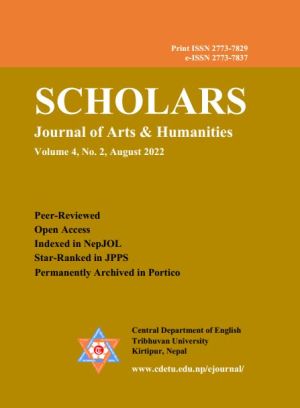The Making of Immigrant Identities in Chang-rae Lee’s Native Speaker
DOI:
https://doi.org/10.3126/sjah.v4i2.47429Keywords:
Immigrant identities, diaspora, hybridity, third spaceAbstract
This article analyzes the formation of multiple and hybird identities of an immigrant in Korean American writer Chang-rae Lee's Native Speaker (1995). Growing up between Korean ancestry and American surrounding, the second-generation immigrant Henry feels uncertainty and dilemma in his sense of belonging. He simultaneously travels in both cultural spaces in his quest of sense of belonging. At times, he attempts to identify himself with American cultural space along with his White wife. However, the reaction of the mainstream society to the immigrants of Asian origin like him makes him aware of his marginalized status in the US. In the same way, he cannot wholeheartedly identify with his Korean ancestry. His upbringing in the American cultural milieu problematizes his sense of belonging in the Korean cultural space. He negotiates between his origin and upbringing in the third space of the diaspora. This negotiation renders multiplicities and pluralities of self, which reflects in his evolving subjectivities that deconstruct the binary of home and host culture. This article examines the formation of hybrid and multiple subjectivities of Henry through his negotiations between his native and host cultural space. Homi Bhabha’s notion of the third space, including hybridity, multiplicities and immigrant identities, has been employed to substantiate evolving multiple subjectivities of immigrants.
Downloads
Downloads
Published
How to Cite
Issue
Section
License
Copyright (c) 2022 Central Department of English, Tribhuvan University and Authors

This work is licensed under a Creative Commons Attribution 4.0 International License.
© Central Department of English, Tribhuvan University and Authors




